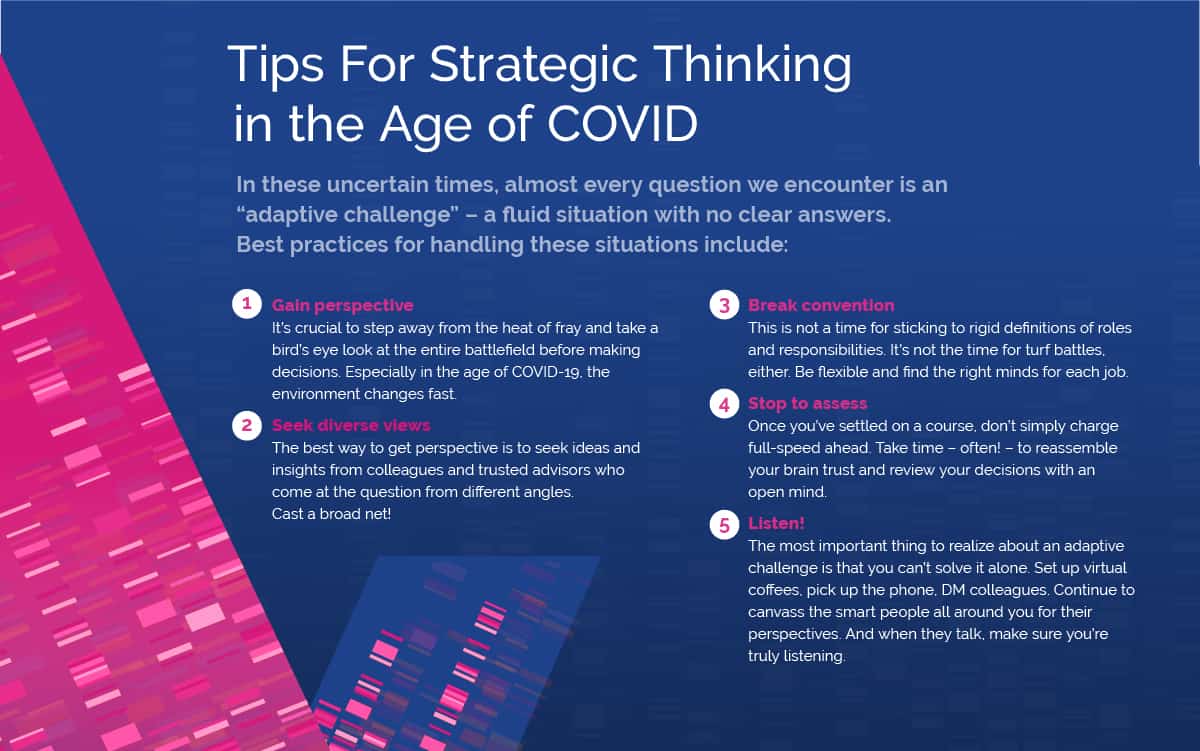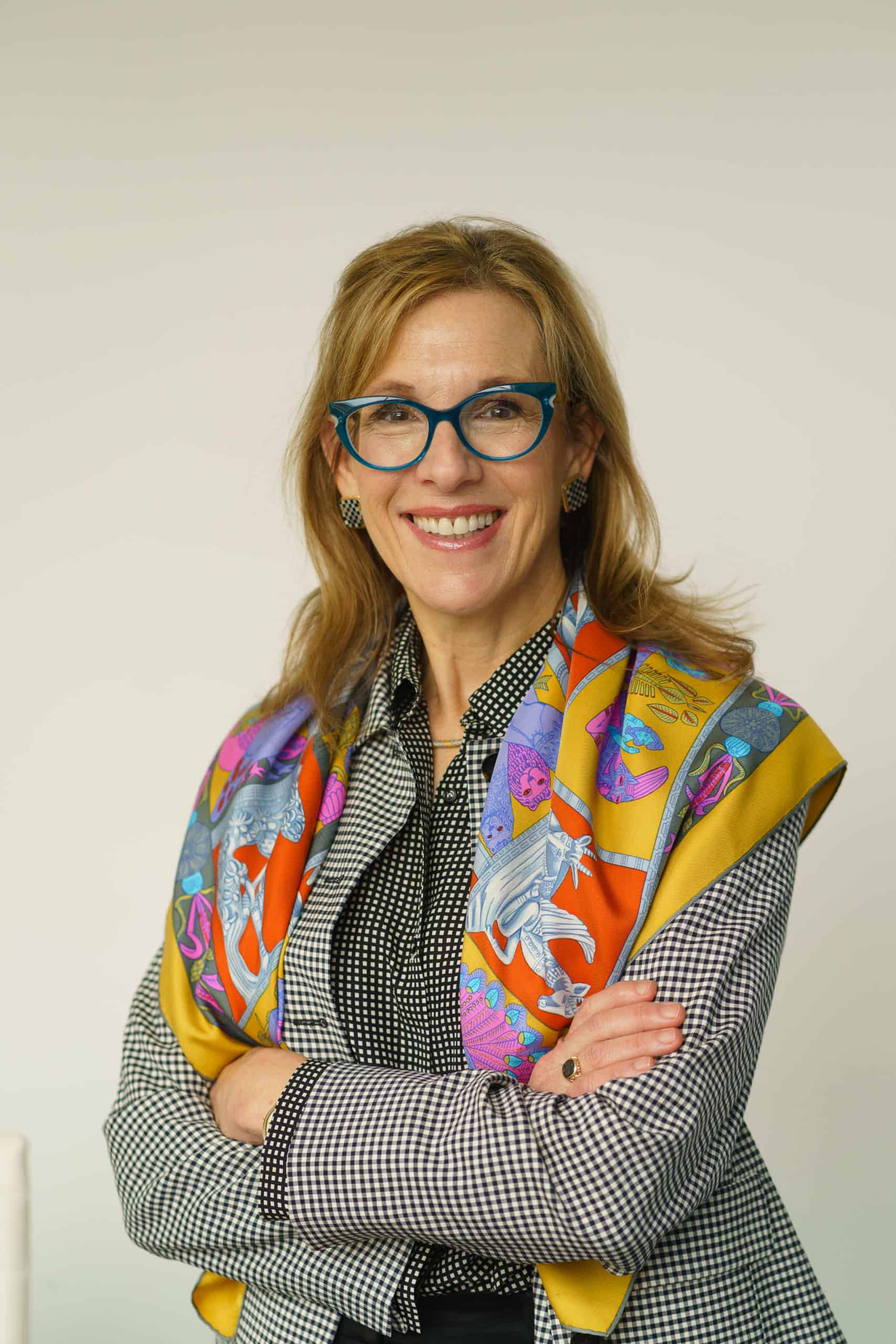
Even though you couldn’t see everyone at the same time in the Zoom meeting, you could tell the AVROBIO R&D team was on fire. People were leaning into their screens, all devices and apps off, using the chat function, ready to talk.
We had moved a long-planned offsite into the virtual world and condensed the agenda. But those concessions could not dampen the excitement in their voices as the 18 participants tackled risk mitigation and planning.
Working with the head of R&D and drawing on the skills of an excellent consultant, I joined the meeting to introduce the concept of adaptive challenges to the team and coach them in the best ways of responding to what we are facing. This is an essential skill at any time – but especially in the age of COVID-19, an unprecedented moment. We need multiple points of view to get to the right diagnosis before we can plan next steps. We need to be willing to push aside assumptions about roles and turf. We need to exercise another mental muscle: strategic thinking.
To build that mental muscle, I kicked off with one of the best intellectual calisthenics I know. One person on the team was given a few minutes to present an idea — her adaptive challenge. Her colleagues peppered her with yes-or-no questions. She then was instructed to stay silent but remain on the Zoom call and listen to them discuss her idea. Over the next 17 minutes she heard a panoply of terrific suggestions, probing questions and important context to inform next steps.
This exercise highlights how crucial it is to seek diverse perspectives before solidifying any plans on something as novel and ambiguous as what we are dealing with today. You may believe you have covered all your bases; you may believe you already have the answer; you may be able to answer simple questions without batting an eye. But you haven’t truly pressure-tested your solution until you give a group of smart, passionate, curious colleagues free rein to challenge your assumptions and examine your conclusions. Listening to them pick apart your thinking can be difficult – but it’s also quite illuminating. Everyone who does this exercise comes away with an increased respect for the intellects all around them and a realization that getting a multitude of perspectives brings far greater clarity to the business or scientific challenge they brought forward. The practice of engaging with multiple perspectives enables a far higher level of strategic thinking and decision making.
As I listened to the team running through their exercises, I realized that we at AVROBIO already spend quite a lot of time collaborating with and challenging our colleagues to sharpen ideas. A lot of our exchanges happen in informal settings. In normal times, AVROBIO caters lunch for all employees twice a week. Yes, of course, some of us talk about the weather or the latest movies. But I also hear so many conversations that dive deep into our science, our clinical approaches and our patient engagement work. People are actively seeking out opinions and advice from colleagues across teams and functions. They’re naturally looking for those diverse perspectives that are so crucial to planning.
The virtual offsite with the R&D team has had compound benefits: a reminder that we need to make an extra effort to seek out those conversations in a world where we’re no longer gathering for lunch or chatting in the hallway. That we need to connect dots in a more overarching way, looking at themes and pushing ourselves beyond norms and provoking suppositions.
Watching the R&D team adapt to this new style of communicating, I felt relief and excitement: This is working! This team not only gets this construct but welcomes it.
I had introduced the concept of flexing our mental muscles to respond to adaptive challenges to our leadership team in February, before the pandemic changed everyday life. Our focus: What could we achieve if we really pushed ourselves to think big – and then made time to realize those bold objectives? We came away with a strategy that we believe will improve our ability to deliver transformational therapies to patients. The very next day we began putting our plans into place. Our commitment: To change our day-to-day work habits to rise to the challenge of our big strategic goals.
Tasking ourselves with focusing on adaptation turned out to be prescient. By starting that work in February, we on the Executive Leadership Team set ourselves up to thrive in the uncertain new environment brought about by COVID-19. As a result, we have been able to coach our colleagues — as we did during the R&D offsite — to practice strategic thinking and aggressively seek out a wide array of perspectives, even when we’re isolated from one another.
I’m already seeing best practices take root. On Zoom calls, people pause before the next agenda item and deliberately seek input from a team member who they know tends to have an alternate point of view. They ask questions of those who aren’t on video but still need to be heard. We’re also getting a lot of terrific conversations about strategy at our virtual Town Halls each Friday.
COVID-19 is a challenge for everyone, but with thoughtful, strategic adjustments, we will overcome the hurdles ahead of us.
In the spirit of this article, I welcome any and all perspectives on adjusting to the work-from-home world! Please share your ideas and insights and I will pass them on to the team.
About the Author:

Georgette Verdin
Chief Human Resources Officer at AVROBIO
Georgette Verdin is the Chief Human Resources Officer at AVROBIO, a leading clinical-stage gene therapy company with a mission to free people from a lifetime of genetic disease. Follow her on Twitter @VerdinGeorgette and on LinkedIn here.